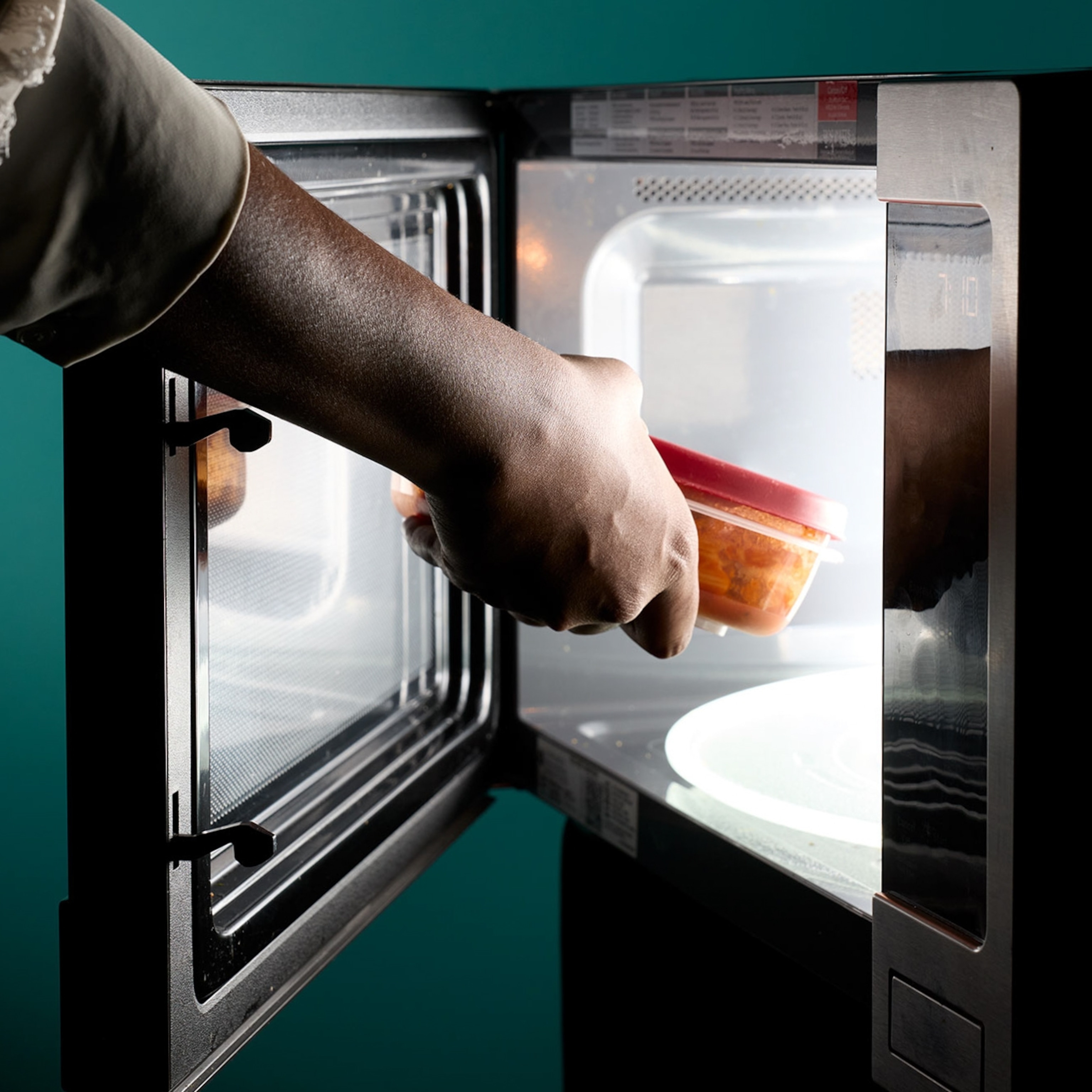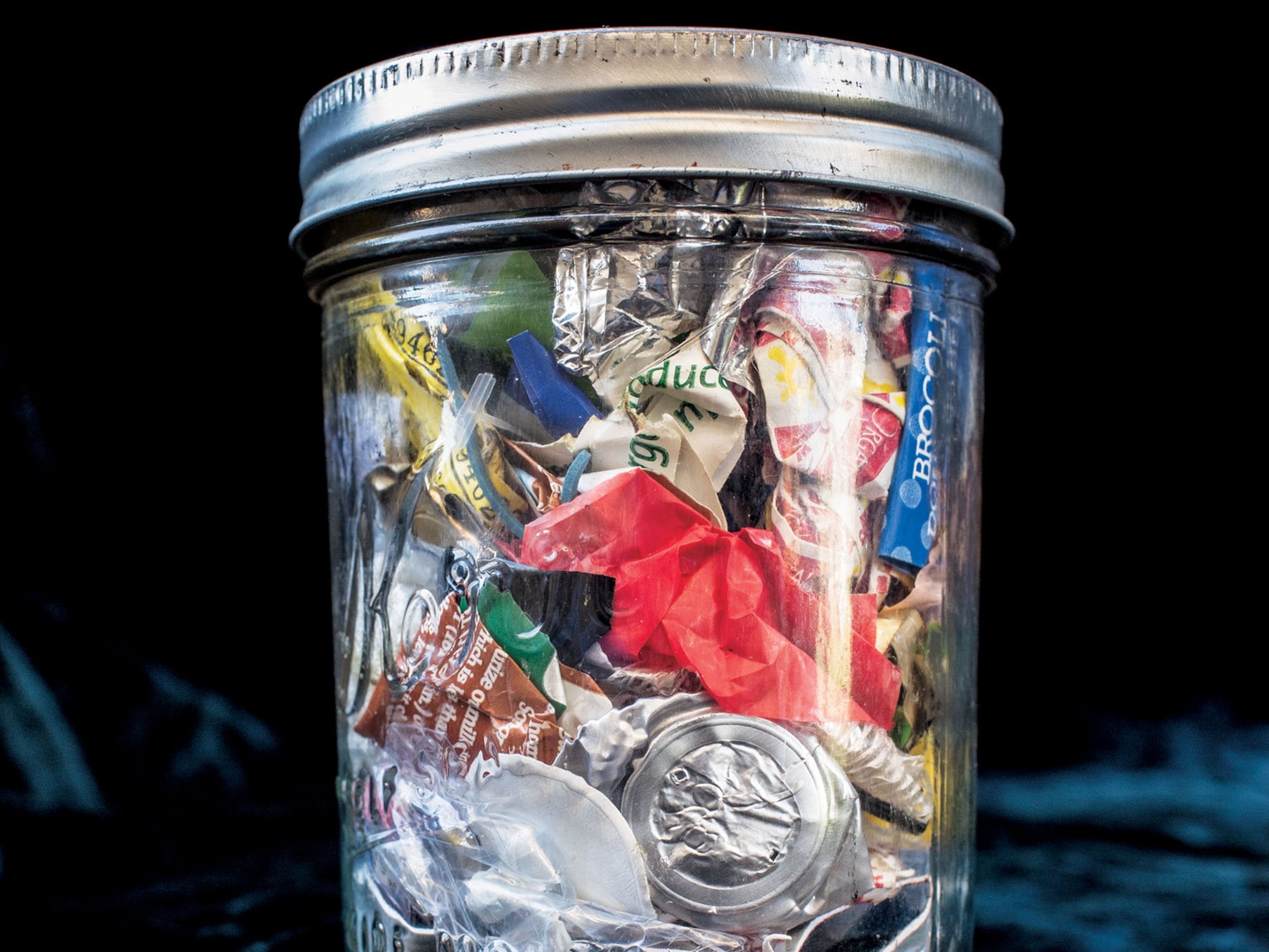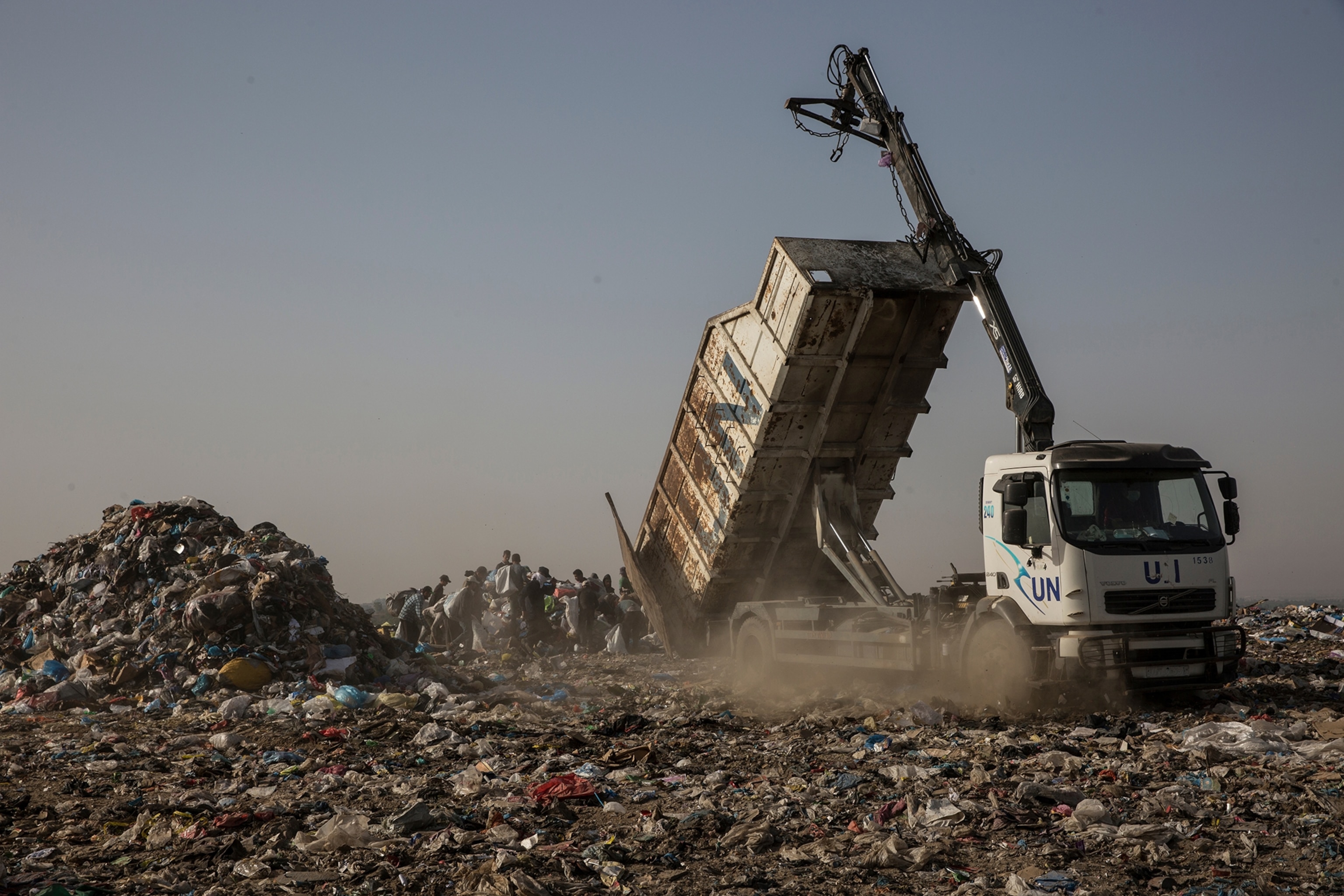
Plastics in the Gaza Strip are both a curse and a blessing
Gaza’s plastic collectors and recyclers create badly needed jobs and income—but at a high environmental cost.
The tiny coastal enclave of Gaza, roughly the size of Detroit, is one of the world’s most densely populated places. Ruled by the extremist group Hamas and besieged by an Israeli-led blockade, Gazans today are running on empty. Here, the focus is not on whether to ban plastic straws or not, but rather how to survive with them.
The United Nations predicts that Gaza will be “uninhabitable” by 2020 in part because 97 percent of the the main source of water isn’t safe to drink. Electricity shortages and damage from wars mean there’s no proper sewage management, so dirty water is pumped into the sea. Consequently, hazardous sewage is everywhere, from the landfills where plastics can live forever to the sea where fisherman can only fish within a few miles due to Israeli restrictions.
And yet despite the dire state, Gaza’s plastic recyclers are at the forefront of work to stave off economic, humanitarian, and environmental collapse. In recent years a new culture and economy have risen up around recycling plastics: from collecting and cleaning to sorting and repurposing, people have created direly needed business opportunities.
“People reuse everything because they have nothing,” says Ahmed Hilles, Director of the National Institute for Environment and Development in Gaza City. “The [Israel] siege and the closure of the border here in Gaza push recycling to become more and more.”
At the same time, years of bombardments and neglect have created cracks in landfills that leach decomposing plastic toxicants into the groundwater. Under blockade by neighboring Israel and Egypt since 2007, Gaza’s plastics, like its people, are stuck with few ways out.
“There are no good laboratories to analyze or diagnose what plastics and chemicals are being used,” says Hilles. “The absence of real government in Gaza makes our problems more and more complicated.”
The collectors
The Hamas government—highly unpopular in Gaza for its repression, heavy taxes, and corruption—oversees public waste management systems. But what’s really driving the recycling movement are the individuals, families, and neighborhoods that organize themselves with a cart and a donkey to collect plastics from homes, streets, beach trash bins, and dumps.
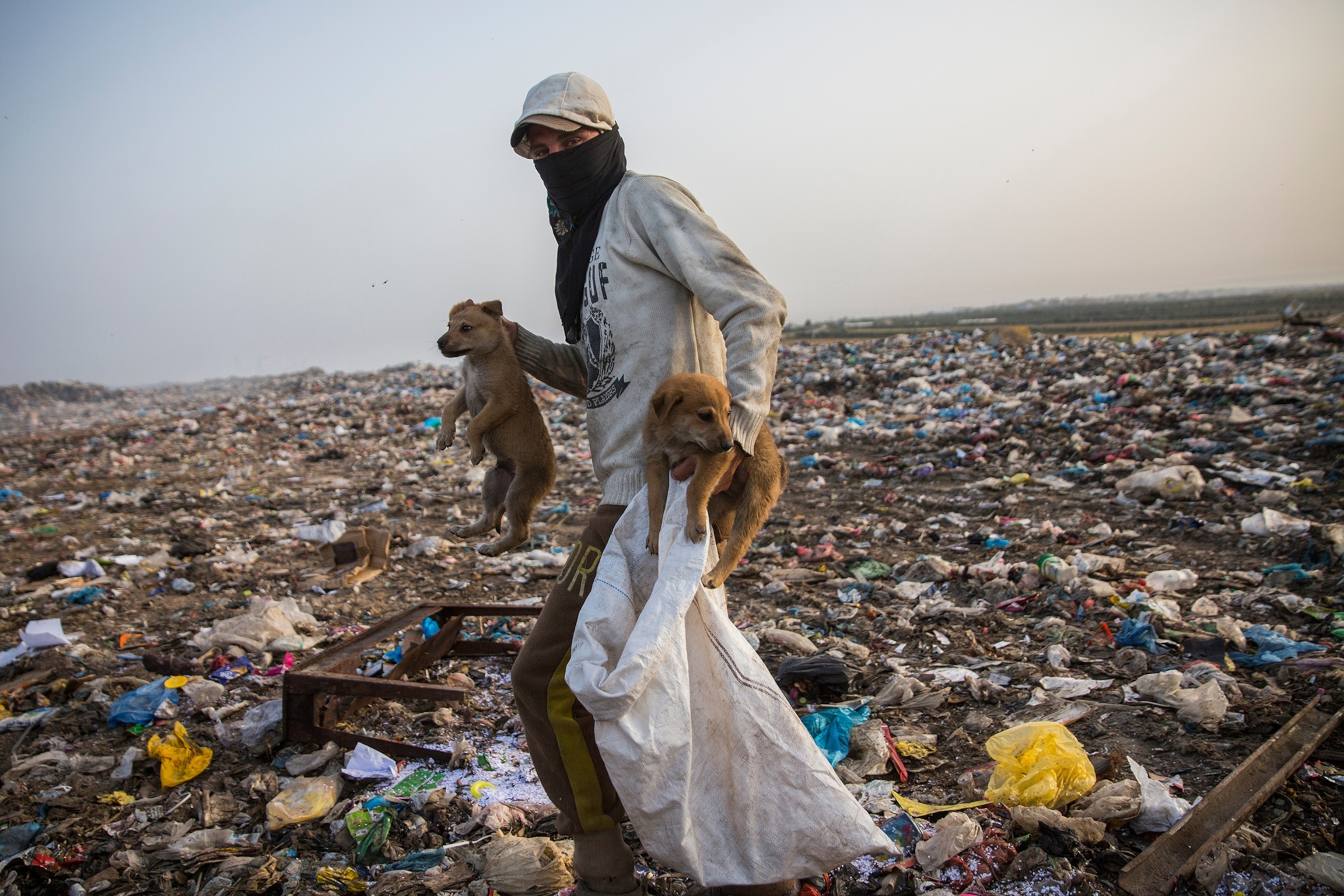
The items they collect are sold to factories, or to a handful of collection sites, that in turn wash and sort the plastics. Sometimes they grind them up and sell them on to factories too.
Plastic makes up about 16 percent of solid waste in Gaza, according to Hilles, and much of it is collected. One kilo of plastic sells for around one Israeli shekel, or 30 cents. The price rises along with the plastic’s quality and type, high-density items being among the most valuable.
Nafez Abo Jamee, 49, runs one of the biggest plastic collection sites in Khan Younis, in Gaza’s south. He started in this field when his work building infrastructure shut down in 2007. The borders closed and he suddenly found himself with large vehicles perfect for hauling trash.
Israel bombed Abo Jamee’s original collection site in the 2014 Israel-Gaza conflict, and he’s still waiting for the Hamas government to compensate him for the damage, he says. Now, as the summer heat beats down, he has just one awning covering a part of his sprawling enterprise.
Nonetheless, Hilles sees something beautiful here.
“They are the most important eco-friendly players and workers,” he says proudly of the sweating and dusty crew in tattered clothes. They sit early in the morning sorting through large piles of plastics segregated by type and color and removing problematic parts like rubber.
“They are very experienced,” he says enthusiastically. “Experts in their field.”
Abo Jamee’s team does indeed see something new in each item—future plastic chairs and tables, children’s play bicycles, woven rugs mixed with thread, brushes for brooms, and additives to make other plastics stretchier, among dozens of possibilities.
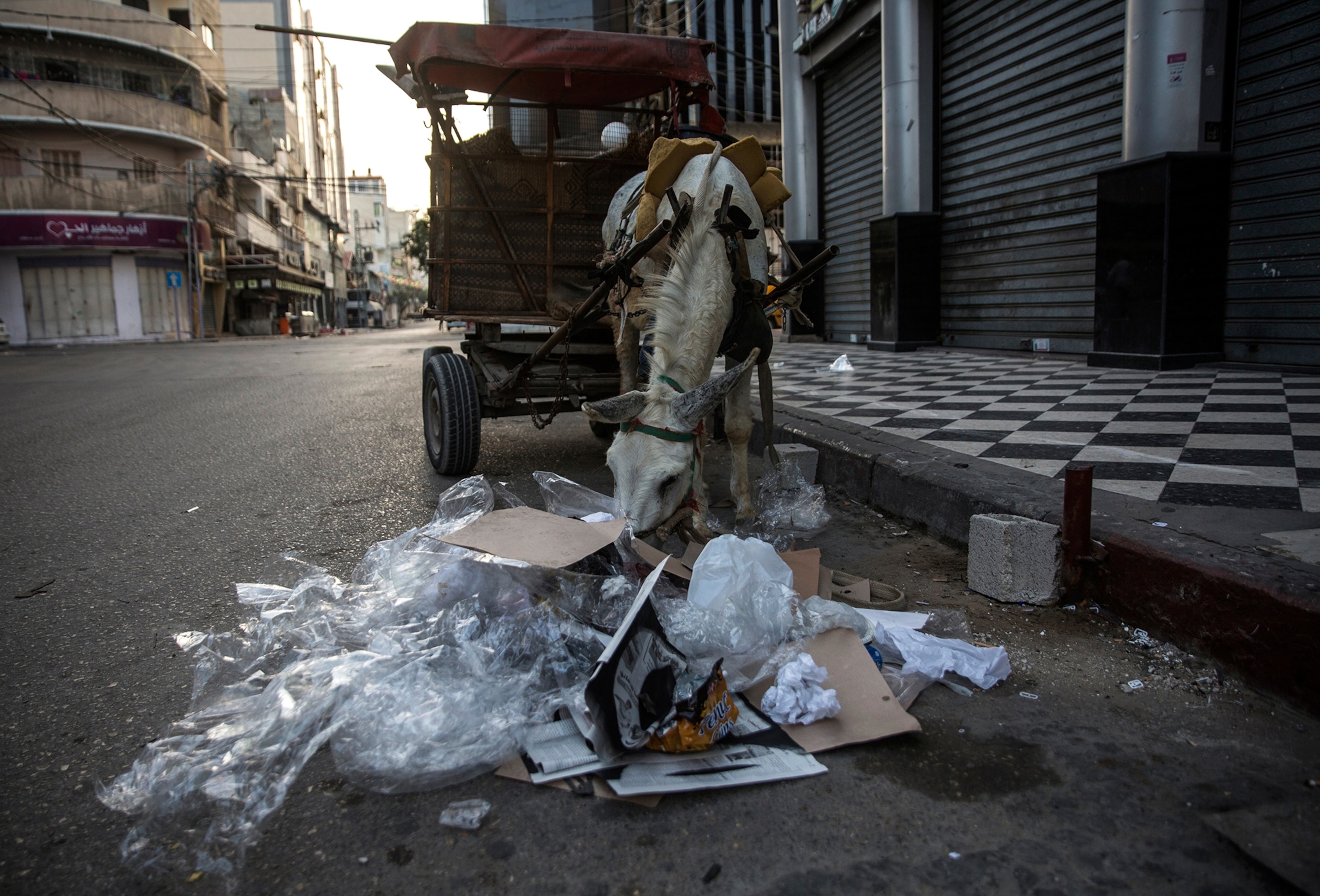
Still, both men worry how plastic pollution and hazardous waste is entering Gaza’s nutrition cycle and affecting people and the land. Glass bottles, Plastic bottles, and other items with BPA plastic, for example, cannot be recycled into anything touching food or drink. But Hilles says government inspectors of plastic factories often don't have the resources, skills, or interest to inspect and make sure local rules based on international standards are adhered to. Water-stressed farmers, for example, will use water tainted by eroding landfills to irrigate their lands, exposing almost everything and anyone along the way.
The rise in recycling in Gaza is in part due to awareness campaigns made by places like Hilles’s center. In one video for local TV, Hellis went diving on Gaza’s polluted Mediterranean coast to teach people about plastic waste in the water and the dangers of eating fish that consume plastic.
Still, there remains little oversight. There are few studies of the health and environmental impacts of plastic production and consumption in Gaza.
“If plastic is made and used correctly, the health impacts are limited,” says Khaled Tibi, 47, head of Environmental Studies at Gaza’s Health Ministry. “The problem is the misuse of plastic.”
“The regulations we have are limited. The possibilities we have are limited. There are no experts who can make specific studies.”
The producer
The buzzing Ramlawi plastics factory in a dilapidated industrial zone east of Gaza City is a local success story.
“Every day I receive more and more [recycled] materials,” says Khalil Ramlawi, 30, who manages his family’s factory, now the largest of around a dozen involving plastic. “Today there’s more information about recycling, and the culture around plastic for people has changed. There’s started a culture where I can sell the plastic and benefit from it.”
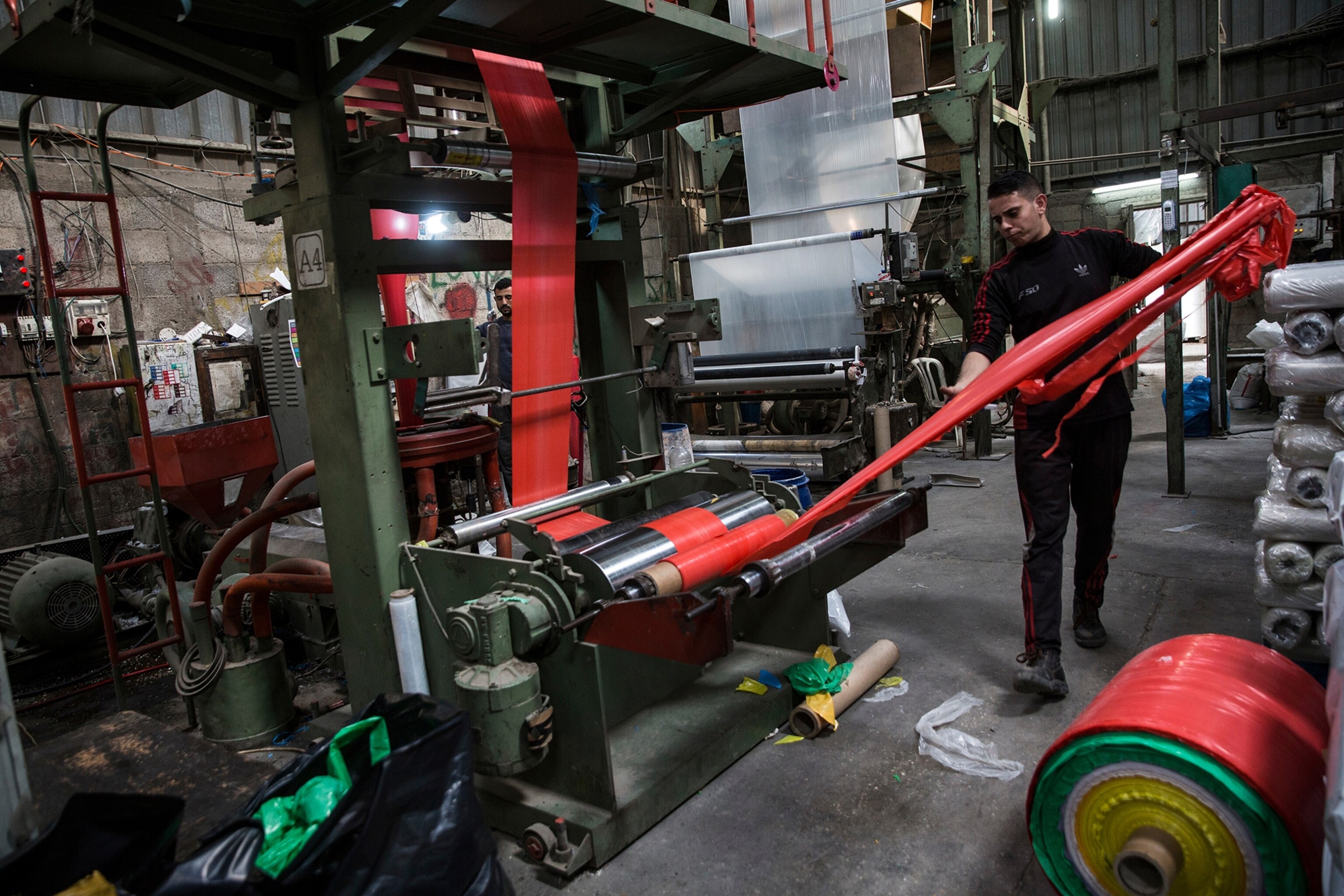
The Ramlawi family started the factory in 1986, when borders were open and they turned a profit making bags, storage containers, pipes, and bottles out of raw polyethylene plastic (the most ubiquitous and among the safest kinds) imported from Israel.
Then in 2007 Hamas, a U.S.-designated terrorist group, seized control of the tiny coastal territory from its western-backed rival, the Fatah party-led Palestinian Authority. Neighboring Israel and Egypt imposed a land and sea blockade to try to squeeze Hamas out. Israel and Hamas have fought three wars in 10 years, with countless bloody skirmishes in the interim.
Now, 12 years later, with limited electricity and resources, the Ramlawi factory is smaller and most of its plastics are collected from inside the Gaza Strip. The factory still imports from Israel sacks of polypropylene and low-density polyethylene plastic pellets to turn into nylon and trash bags. At times, though, the imports stop; polyethylene is on Israel’s list of bannable “dual-use” items, meaning that it’s classed as having both civilian and military purposes.
In addition to the imported materials, the factory turns plastic items purchased from collectors into trash and greenhouse bags, irrigation pipes, and other items, depending on the need.
When imports from Israel are steady, about 10 percent of plastic products in Gaza are from locally recycled items and 90 percent from ready-to-use polyethylene pellets produced in Israel and other countries like the United States and United Arab Emirates, according to Sami Nafar, the head of Gaza’s Plastics Federation.
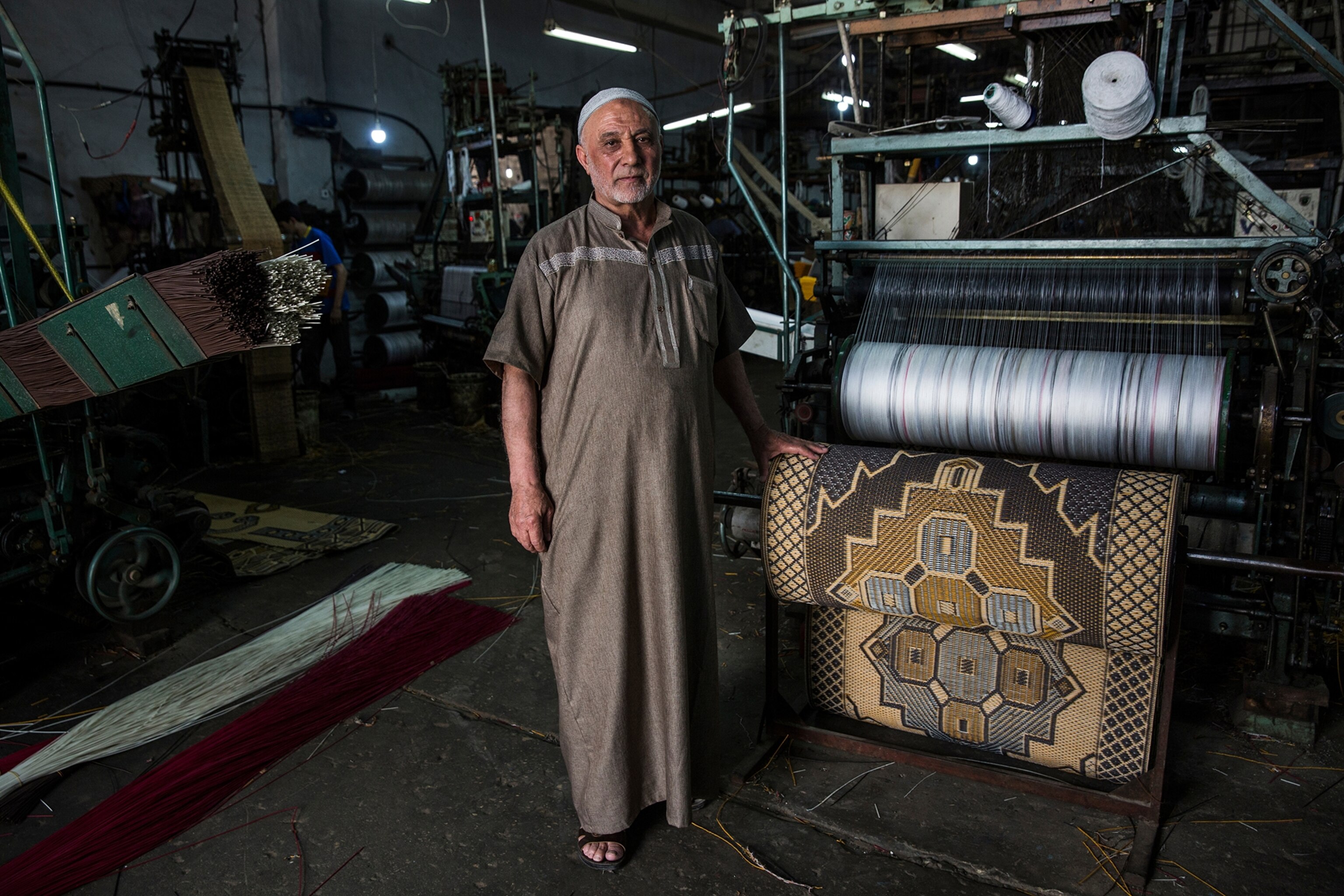
Ramlawi watches YouTube videos online of plastic recycling in other countries. He’s interested in burgeoning technologies to create alternatives like dissolving plastic bags—except Gaza is a long way off from that. He wants to go abroad to study the sector more, but that requires a hard-to-procure visa and way out.
The effects of plastic
The Ministry of Health’s Tibi has no doubt that the work of people like Wissam Adel, 15—who spends his days picking through piles of trash at a rancid-smelling landfill—is hurting his long-term health.
Adel dropped out of school to scrounge for plastic along with his brothers. Just breathing at the site where he spends his day makes his lungs hurt. Adel wears tattered clothes, worn plastic sandals, and each day walks up to an hour from his home in a densely populated Gaza City neighborhood to the Juhoor ad deek landfill. He’s lucky if he makes 15 shekels ($4) a day. He and his crew loiter for a UN truck to come and then pounce on the newly dumped loot. In the backdrop loom cranes from across the border in Israel.
“We want to live,” Adel explains, echoing a chant of poverty-stricken Gazans at recent protests against Hamas and Israeli restrictions. He can find no other work. A haze rises from the decomposing trash, where stray dogs and puppies play.
That, for Hilles, is part of why plastic recycling needs to be taken more seriously in Gaza.
“The planet is all of our responsibility,” he says. “This environment is not a gift from our grandmothers. It’s to be preserved for the future generations. We in Gaza are part of this world.”
Intimaa Alsdudi contributed reporting.


